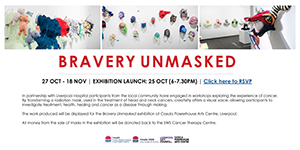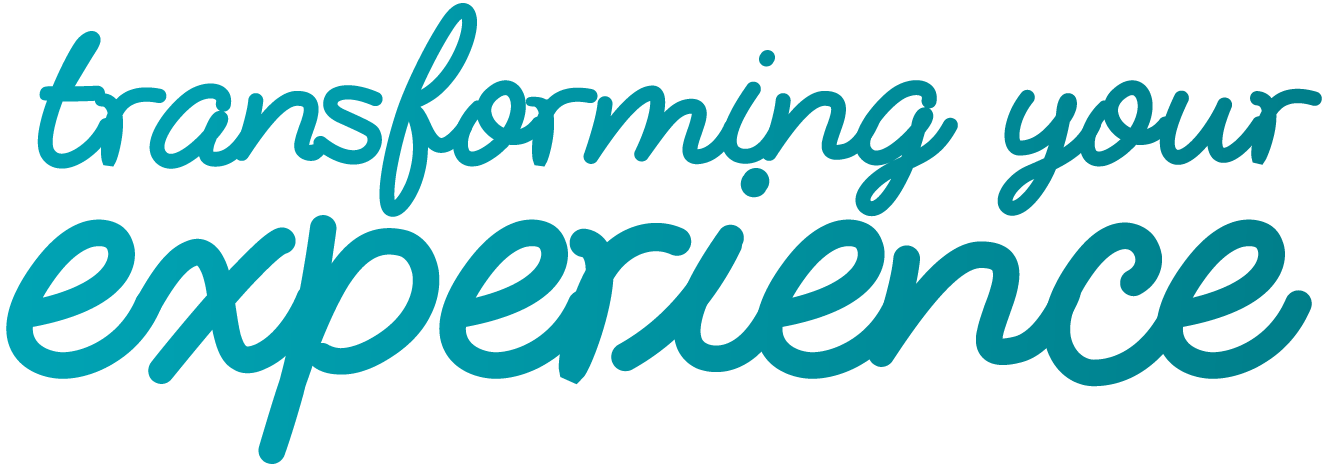Bravery Unmasked
27th October to 18th November 2018 2018
Opening Night:
Thursday 25th October 2018 6pm-7:30pm
Casula Powerhouse Arts Centre RSVP to: rsvp@casulapowerhouse.com

Invite
  
Exhibition Room sheets
2016 2017 2018
When people undergo treatment for head and neck cancer, a close fitting mask is moulded over their face and neck and bolted to a table so they remain perfectly still during the radiation treatment.
The Bravery Unmasked programme in South Western Sydney was inspired by another innovative program called Courage Unmasked Tennessee (www.courageunmasked.org). Most patients do not enjoy the experience and often afterwards want to throw the mask away when the treatment is finished. In 2009 a cancer patient decided to turn her mask into a work of art and ‘Courage Unmasked’ was born.
To our knowledge this is the first time that this particular initiative has been undertaken in Australia where masks have been used as a tool for people to explore emotions and reflect on their treatment experience.
With the help of a creative arts therapy project in Liverpool and Campbelltown Cancer Therapy Centres, patients can attend workshops with local artists or art therapists in order to decorate their masks and transform them into an art piece.
These decorated masks are displayed at the Casula Powerhouse Arts Centre as part of their Arts in Health Program, and some are being displayed at other radiotherapy departments as part of a travelling exhibition in order to advertise the ongoing programme, and provide information for patients about radiotherapy and the masks.
What happens to the masks after treatment?
All patient identifications and marks are removed from the mask at the end of treatment.
Patients have the option to take the mask home, or the masks were disposed of as recycled material. Now, the masks are transformed into works of art as part of the Bravery Unmasked Program.
What is a Radiotherapy Mask?
What is Radiotherapy?
Radiation therapy uses high-energy radiation to shrink tumours and kill cancer cells. X-rays, gamma rays and charged particles are types of radiation used for cancer treatment. The radiation may be delivered by a machine called a linear accelerator or LINAC (Figure 1). It sends high doses of radiation to the cancer cells while sparing normal tissue. About half of all cancer patients receive some type of radiation therapy sometime during the course of their treatment.
 
Why do patients receive radiotherapy?
Radiation therapy is often given with curative intent (that is, with the hope that the treatment will cure a cancer, either by eliminating a tumour, preventing cancer recurrence or both). In such cases, radiation therapy may be used alone or in combination with surgery, chemotherapy, or both. Radiation therapy may also be given with palliative intent to relieve symptoms caused by cancer.
Why do we need masks for head & neck cancers?
Radiation treatment is given in fractions (number of treatments). Fractionated treatment allows the normal tissue to repair in between treatments.
Typically treatment can range from 1 to 35 treatments.
During treatment, it is necessary to ensure that the patient will be in exactly the same position every day.
Patients getting radiation to the head and neck area may need a mask;
to make it easier for a patient to stay still
to help keep the head from moving so that the patient is in the exact same position for each treatment
so markings can be drawn on the mask, not on skin
How are the masks made?
 
NSW Health & the arts
Researchers from the USA National Institutes of Health reviewed 27 randomized clinical trials including 1,576 cancer patients, examining effects of creative arts therapies on psychological symptoms and quality of life. They found that creative arts based therapy helps clients to:
- express feelings when it is difficult to talk
- explore imagination and creativity
- develop healthy coping skills
- improve self-esteem and confidence
- identify and clarify issues and concerns
- increase communication skills
- share in a safe nurturing environment
- improve motor skills and physical co-ordination
- identify blocks to emotional expression and personal growth
Effects of Creative Arts Therapies on Psychological Symp-toms and Quality of Life in Patients With Cancer. Published online, 2013 in JAMA Internal Medicine. Timothy W. Puetz, PhD, MPH, National Institutes of Health, Bethesda, Md
|









